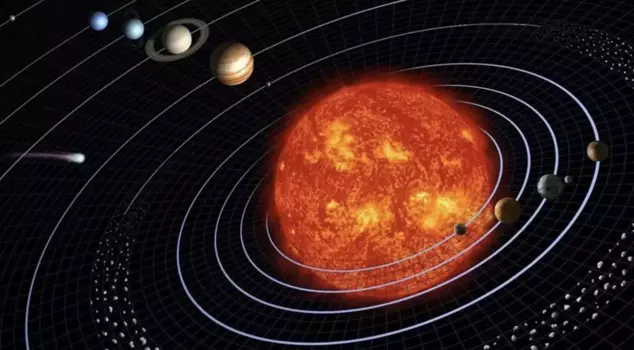
17.04.2025 12:05
Scientists at the University of Cambridge have detected chemical traces in the atmosphere of a planet located hundreds of light-years away from Earth that could be associated with life.
Astronomers at the University of Cambridge in England have announced the discovery of the strongest evidence yet for signs of life beyond the Solar System. Observations made by the James Webb Space Telescope indicate the presence of chemical signs of life on a giant planet named 'K2-18 b', located approximately 124 light-years away from Earth. In research led by astrophysicist Prof. Nikku Madhusudhan from the University of Cambridge, compounds known to be produced only by living organisms on Earth, dimethyl sulfide (DMS) and dimethyl disulfide (DMDS), were detected in the planet's atmosphere.
"THIS COULD BE A TURNING POINT IN ANSWERING THE QUESTION OF WHETHER WE ARE ALONE IN THE UNIVERSE"
Experts emphasize that the presence of these chemicals does not directly prove alien life, but they indicate the strongest approach yet to answering the question of whether we are alone in the universe. In a statement regarding the matter, Prof. Madhusudhan said, "This is the strongest evidence we have obtained to date for biological activity beyond the solar system. We must question whether the signal really exists and what it means. Perhaps years from now, when we look back at this moment, we will realize that a universe capable of harboring life is now a reachable reality. This could be a turning point in answering the question of whether we are alone in the universe."
"K2-18 B IN THE LEO CONSTELLATION HAS A MASS ABOUT 9 TIMES THAT OF EARTH"
'K2-18 b', located in the Leo constellation, has a mass approximately nine times greater than that of Earth and a diameter 2.6 times wider. It orbits a red dwarf star that is half the size of the Sun and cooler, situated within the habitable zone. After the Hubble Space Telescope detected water vapor in the planet's atmosphere in 2019, scientists had described 'K2-18 b' as the "most habitable planet known outside the Solar System."